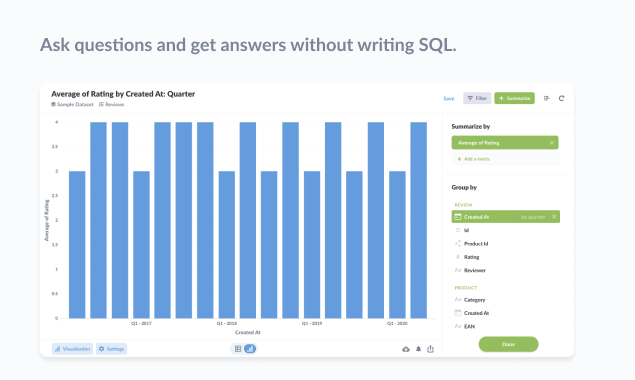

- #Metabase release notes install
- #Metabase release notes update
- #Metabase release notes manual
- #Metabase release notes full
We’ve revamped the Permissions section of the Admin Panel to make it easy to manage permissions in Metabases with lots of people and groups. Fully redesigned permissions page (and a new permission level) Don’t worry, when we release 0.42, we’ll provide you with tools to help migrate your existing Pulses to dashboard subscriptions, so you won’t miss a beat. Pulses will still work in this release (and they look so much nicer!), but 0.41 will be Pulses’ final release. Plus, Admins in these plans can now restrict the domains to which Subscriptions and Alerts can be emailed.īecause Dashboard Subscriptions are that much better, we’re going to remove Pulses in favor of Dashboard Subscriptions in the next release (0.42). We’re also giving everyone much more control over the Subscriptions and Alerts they receive, by letting you manage them from your account settings.įor Pro and Enterprise plans, Admins can now see all subscriptions and alerts set up in their instance. Now they look and feel more like their in-Metabase counterparts, but easy to view in email or Slack. We’ve heard your asks, and it’s finally here: completely redesigned Dashboard Subscriptions and Alerts. Here’s what’s new: Revamped Subscriptions and Alerts
#Metabase release notes manual
Tired of manual updates? It’s easy to upgrade to a hosted plan.
#Metabase release notes update
If you’re self-hosting, you (or your administrator) can update to the latest version by following the instructions here.

The emojis used in the GitHub comment report ares: Emoji HTML reports: The compare-with-imported-metabase Maven profile generates the HTML report that contains the summary information including current results with the specified out of the box release version using the imported metabase data.Use a JSON-friendly viewer with search capabilities to view the report. JSON reports: The run-performance-tests Maven profile generates the JSON report and contains detailed information about database calls.
#Metabase release notes full
compare-with-imported-metabase: Compares current results with the specified out of the box release version using the imported metabase data and generates a full HTML report.run-performance-tests: Runs all performance tests and creates JSON reports.To specify a different release version, modify the -Depc.version= system property on the command line.
#Metabase release notes install
Mvn clean install -Prun-performance-tests,compare-with-imported-metabase -Depc.version=8.3.x Open the terminal and change the directory to the extensions/system-tests/performance-tests/cucumber folder in your ep-commerce source code folder. Executing the Toolĭo the following to verify the performance of project customizations against the specified release version:

Invoke this tool from a developer’s local environment only.


 0 kommentar(er)
0 kommentar(er)
